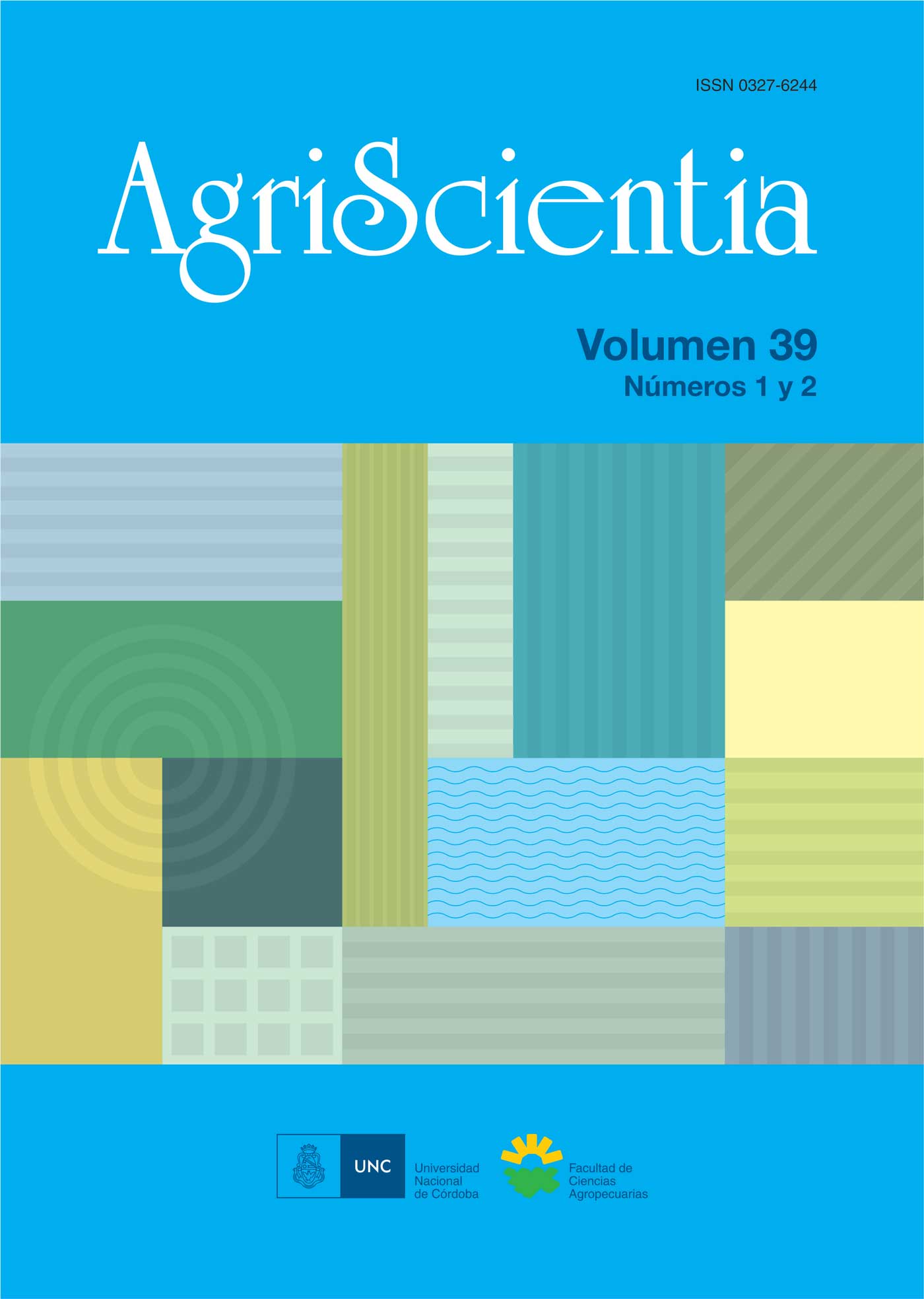Evaluation of different construction materials in the shield sunflower harvester head (Helianthus annuus L.) for the reduction of capitulum shelling
Main Article Content
Abstract
In the harvest, the highest percentage of grain losses occurs in the harvester head. This exceeds 70 % of the total loss in the cultivation of sunflower (Helianthus annuus L.). The objectives of this work were to test the different manufacturing materials of the shield of the sunflower head at different speeds to reduce losses due to impact and to propose different recommended speeds for each material. The test was carried out on confectionery sunflower (Hybrid NTC 90). A Mainero brand head was used. It was tested at two different forward speeds (6.5 km/h and 8 km/h) with three shields made of different materials: a 2 mm thick sheet metal shield, a shield covered with elastomer, and a shield made of fiberglass. The parameter evaluated was the loss of grains in the harvester head. The results obtained show that the fiberglass shield presented the lowest percentage of grain losses and that at 8 km/h grain losses exceeded those recommended regardless of the shield used. It is concluded that the use of more elastic materials reduces grain loss due to impact.
Downloads
Article Details

This work is licensed under a Creative Commons Attribution-ShareAlike 4.0 International License.
References
Botta, G. F., Tolón-Becerra, A., Bienvenido, F., Rivero, D., Laureda, D. A., Contessotto, E. E. (2018). Sunflower (Helianthus Annuus L.) harvest: Tractor and grain chaser traffic effects on soil compaction and crop yields. Land Degradation and Development, 29(12), 4252-4261. https://doi.org/10.1002/ldr.3181
Bragachini, M., Martín, A. y Méndez, A. (2001). Eficiencia de cosecha de girasol. INTA PRECOP.
Chancellor, W.J. y Cervinka, V. (1975). Potential harvest improvements with optimum combine management. Transactions off the ASAE, 18(1),59-65. https://doi.org/10.13031/2013.36525
Di Rienzo, J., Casanoves, F., Balzarini, M., Gonzalez, L., Tablada, M. y Robledo, C. (2018). InfoStat (versión 2018) [Software]. Córdoba, Argentina: Grupo InfoStat, FCA, Universidad Nacional de Córdoba.Farrel, M. (2005). Relevamiento y análisis de las pérdidas de cosecha en La Pampa.
Cultivos de cosecha gruesa: Actualización 2005. Publicación técnica, 61. EEA Anguil.
González, A. y Palazon, A. C. (1960). Ensayos industriales de materiales, combustibles y lubricantes (3raEd.). Mitre.
Guzmán, A. (1976). Resistencia de materiales (7ma Ed.). Centro de Estudiantes de Ingeniería de La Plata.
Hunt, D. (2001). Farm Power and Machinery Management (10th Ed.). Iowa State University Press.
Nalobina,О. O., Vasylchuk, N. V., Bundza, О. Z., Holotiuk, M.V., Veselovska, N. R. y Zoshchuk, N. V. (2019). A new technical solution of a header for sunflower harvesting. INMATEH Agricultural Engineering,58(2), 129-136.
Nyborg, E. O., Thauberger, J. C. y Gregory, R. P.(1981). Evaluation Report No. E0280B. Alberta Farm Machinery Research Centre and Prairie Agricultural Machinery Institute. http://pami.ca/pdfs/reports_research_updates/(4c)%20Grain%20Combines%20and%20Attachments/204.PDF
Ministerio de Producción y Trabajo (2019). Estimaciones Agrícolas. Informe Mensual. Presidencia de la Nación. https://www.magyp.gob.ar/sitio/areas/estimaciones/_archivos/estimaciones/190000_2019/190300_Marzo/190321_Informe%20Mensual%2021%2003%2019.pdf
Sears, F., y Zemansky, M. (2009). Física Universitaria (p. 249). Mexico: Pearson.
McGraw-Hill.





